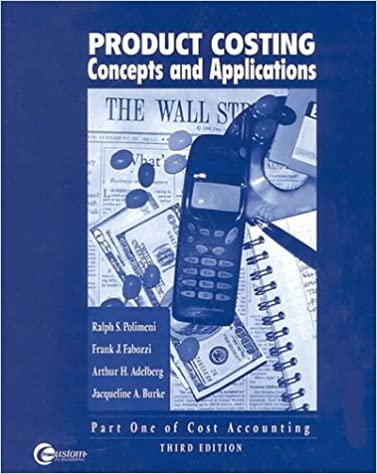Answered step by step
Verified Expert Solution
Question
1 Approved Answer
One of the following cannot be called Purchases, which? Goods bought on credit Office furniture purchased Goods bought with cash Goods purchased for resale The
- One of the following cannot be called Purchases, which?
- Goods bought on credit
- Office furniture purchased
- Goods bought with cash
- Goods purchased for resale
- The following do not form part of personal accounts;
- Premises,
- Rent,
- Debtors,
- Creditors
- ii and iv only
- ii and iii only
- i and ii only
- iii and iv only
- The term working capital means the
- total of fixed assets minus long-term liabilities
- excess of current assets over current liabilities
- capital less drawings
- amount of money invested in the business by its owner(s)
- The following should be the correct entries if the proprietor takes goods for personal use:
- Dr Stock Account, Cr Purchases Account
- Dr Drawings Account, Cr Stock Account
- Dr Drawings Account, Cr Purchases Account
- Dr Purchases Account, Cr Drawings Account
- If opening capital was GHC330,000, closing capital GHC227,000 and drawings GHC66,000 then loss or profit for the year is
- GHC169,000 profit
- GHC169,000 loss
- GHC37,000 profit
- GHC37,000 loss
- If there is a debit balance of GHC18,500 in a cash book, it means that
- GHC18,500 cash been overspent
- There is GHC18,500 cash in hand
- GHC18,500 is the total of cash paid out
- Total cash received is equal to GHC18,500
- The first place to enter details on sales invoice is in the
- Sales journal
- Cash book
- Sales account
- General Journal
- Cash float of GHC5,000 are given. If GHC43,800 is spent during the period, how much will be reimbursed at the period?
- GHC50,000
- GHC6,200
- GHC43,800
- GHC56,200
- The general journal is used for all of the following except
- Correction of errors
- Purchase of business
- Recording of credit sales
- Closing entries in the books of a firm
- The cash book is used to record all of the following except
- Trade discounts
- Payments for goods bought
- All cash received from suppliers
- Expenses which arise in connection with the business
- The imprest system is put in place in order to avoid
- Payment of relatively small amount
- Payment of small amount by cheque
- Excessive expenses of maintaining records
- None of the above
- All of the following are true about double-column cash books except that
- two separate totals are required to be arrived at for receipts
- two balances are carried forward at the end of a trading period
- the debit cash total must exceed or be equal to that of the credit
- the book cannot show a debit bank balance and a credit bank balance at the same time.
- All of the following appear on the adjusted cash book except
- Unpresented cheques
- Uncredited cheques
- Balance as per cash book
- Balance as per bank cheque
- are the claims of persons other than the owners of the business.
- Assets
- Capital
- Revenue
- Liabilities
- The economic resources of an entity are its
- Assets
- Capital
- Income
- Creditors
Which of the following equations are correct and which of them are incorrect?
(Please tick)
CorrectIncorrect
- Assets + Liabilities = Owners equity
- Assets + Owners Equity = Liabilities
- Assets = Creditors=Owners Equity
- Assets Owners Equity = Liabilities
- Liabilities = Owners Equity = Assets
Read the statements below and determine whether they are true or false. Circle A or B accordingly.
- Accounting is an aspect of bookkeeping.
- True
- False
- Bookkeeping constitutes the recording and classifying aspects of Accounting.
- True
- False
- Cash introduced into a business is better called assets.
- True
- False
- Trade debtors are classified as assets and in some situations short term liabilities.
- True
- False
- Bank overdraft falls due for settlement in a year and as a result may be classified as short term liability.
- True
- False
- In accounting the owner and the business are separable.
- True
- False
- An example of capital is a loan.
- True
- False
- Profit belongs to the business.
- True
- False
- In certain situations capital is equal to liabilities.
- True
- False
- Purchases and sales are sometimes the same in accounting
- True
- False
Step by Step Solution
There are 3 Steps involved in it
Step: 1

Get Instant Access to Expert-Tailored Solutions
See step-by-step solutions with expert insights and AI powered tools for academic success
Step: 2

Step: 3

Ace Your Homework with AI
Get the answers you need in no time with our AI-driven, step-by-step assistance
Get Started


